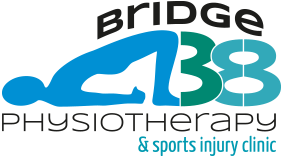Part one of this blog series on exercise and back pain is going to ascertain when it is safe to exercise with back pain, what kinds of exercise are good and also when you should seek professional advice.
Introduction:
Back pain is common with over 80% of us at some point in our lifetime experiencing some back pain. The majoirty of us will recover within 2-6 weeks of the onset and 85% of us will be recovered by 3 months. Back pain isn’t usually a sign of something serious but much more likely that an awkward movement has pulled a muscle or strained a ligament. Only a very small percentage of people between 1-5% of those with back pain will have something more serious that requires on-going investigations.
Scans are rarely needed and the evidence suggests the scans only show something truly important in a tiny minority, <5% of people with back pain.
In studies of people who are PAIN-FREE, a whopping 90% will have some form of degeneratioin, 52% will have bulging discs, 28% will have disc herniations and 38% will have arthritic changes as shown on scans. Remember these people do not have back pain so these issues being reported are very much like the wrinkles in our skin, which are normal findings as we get older and do no necessarily cause us harm.
I have pain now – Can I continue to Exercise
Exericse is good and safe with most back pain. Many people are afraid to exercise when they are in pain as they think it may cause more harm or they may get worse. However, this is an unfounded belief and regular exercise helps to keep the body fit and healthy and actually reduces pain and discomfort. It relaxes muscle tension and helps mood. It doesn’t seem to matter what type of exercise you choose as no one is more effective than the other.
It is safe to exerise if:
- your back pain is recent and your pain is mild to moderate in intensity (less than 5/10 if 10 being the worst possible pain)
- No pain going down into the legs and no neurological symptoms such as numbenss, pins and needles
- You feel well in yourself
- Simple medication or changes in position can help relieve pain.
I would recommend staying active where possible and include walking, cycling, swimming and gentle mobility exercises. Pace yourself and don’t do too much otherwise you may get sore but doing too little could increase your stiffness and pain. Don’t push through your pain during exercise as it is not a case of no pain no gain. You may find you can contine with your normal sport or activity but as a much slower pace or shorter duration to begin with and gradually increase as your pain starts to reduce.
Seek advice before continuing with exercise if:
- Your pain is very severe >6/10
- You have symptoms down into buttocks, legs or feet
- You have pins and needles in one or both legs or feet (this can be a sign of inflammation around the nerve.
- There is a weakness or heaviness feeling in the legs.
- Your pain is constant and doesn’t change or reduce no matter what you do.
- You have had a previous history of cancer, rheumatological conditions or your general health has deteriorated since your back pain started (weight loss, night pain, nausea)
- Your back pain started after trauma – a fall, lifted something very heavy
If you have any of the above symptoms I would recommend seeing your GP or health professional first get the correct guidance in managing your symptoms.
Signs that you need urgent medical attention:
Head to A+E if along with your back pain you have
- urine retention
- Faecal incontinence
- Saddle paraesthesia which is pins and needles or numbness in the groin or between your legs and this may also include erectile or sexual dysfunction.
- Gait disturbances that affect your walking and make you feel wobbly or unsteady.
- Your pain started after severe trauma eg a road accident, a fall from height
Although very rare, these can be signs of a condition called cauda equina syndrome. A group of nerves called the cauda equina supply your bladder and bowel and if they get compressed it needs to be dealt with very quickly to prevent long term complications of bladder, bowel and sexual function.
Key Message:
Our spines are strong and stable structures that are unlikley to be harmed by normal everyday activites.
Most back pain resloves within 3 months and gentle progressive exercise is ok and will improve your symptoms.
If in doubt seek profressional advice.
In Part 2 I will show you some simple exercises you can do at home to help reduce your back pain.
